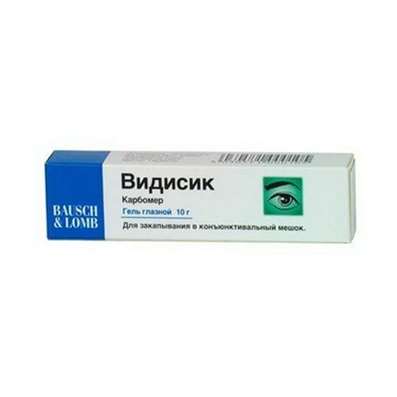Instruction for use: Eptifibatide
I want this, give me price
Trade name of the drug – Integrilin
The Latin name of the substance Eptifibatide
Eptifibatidum (genus. Eptifibatidi)
Gross formula
C35H49N11O9S2
Pharmacological group:
Antiaggregants
The nosological classification (ICD-10)
I20.0 Unstable angina: heberden disease; Angina pectoris; The attack of angina pectoris; recurrent angina; Spontaneous angina; Stable angina pectoris; Angina rest; Angina progressing; Angina mixed; Angina spontaneous; stable angina; Chronic stable angina; Angina Syndrome X
I21 Acute myocardial infarction: Myocardial infarction in the acute phase; Acute Myocardial Infarction; Myocardial infarction with pathologic Q wave and without; Myocardial infarction complicated by cardiogenic shock; Infarction left ventricular; Transmural myocardial infarction; Myocardial infarction netransmuralny (subendocardial); Netransmuralny myocardial infarction; Subendocardial myocardial infarction; The acute phase of myocardial infarction; Acute myocardial infarction;Sub-acute phase of myocardial infarction; Subacute phase of myocardial infarction; Thrombosis of the coronary arteries (the arteries); Threatened myocardial infarction; Myocardial infarction without Q wave
I22 Subsequent myocardial infarction: Atherosclerosis and the likelihood of reinfarction; Myocardial infarction re; Relapses myocardial infarction
Z95.5 Presence of coronary angioplasty implant and graft: Coronary artery bypass grafting; Arteriovenous shunting; Thrombosis of arteriovenous shunt
CAS Code
188627-80-7
Characteristics of substance Eptifibatide
A synthetic cyclic heptapeptide containing 6 amino acids and a mercaptopropionyl residue is deamino-cysteinyl.
Pharmacology
Mode action - Antiaggregational.
Prevents the binding of fibrinogen, von Willebrand factor and other adhesive ligands to glycoprotein IIb / IIIa receptors of platelets, reversibly inhibits platelet aggregation.
In ex vivo studies using ADP and other inducers of platelet aggregation, it was shown that after IV bolus administration at a dose of 180 μg / kg, the effect occurs immediately. With subsequent infusion at a dose of 2 μg / kg / min, inhibition of ADP-induced platelet aggregation by more than 80% is observed in at least 80% of patients (with calcium content at the physiological level). After 4 hours after the termination of the infusion, the functional activity of the platelets is more than 50% of the baseline level. Has no significant effect on prothrombin time, activated partial thromboplastin time.
In bolus doses of 90-250 μg / kg and infusion at a rate of 0.5-3.0 μg / kg / min, pharmacokinetics are linear and dose-dependent. When administered according to the recommended scheme (bolus, then infusion) Cmax is quickly reached, then the concentration decreases slightly and reaches an equilibrium level within 4-6 hours. Binding to plasma proteins is about 25%. T1 / 2 from the plasma - 2.5 hours, the clearance is 55-58 ml / kg / h, the volume of distribution is 185-260 ml / kg. In healthy people, the kidney clearance is 50% of the total clearance. It is excreted mainly with urine in unmodified form and in the form of metabolites.
Application of substance Eptifibatide
Acute coronary syndrome: unstable angina, myocardial infarction without Q wave (prevention of death and recurrent myocardial infarction). Conduction of percutaneous transluminal coronary angioplasty - PTCA (prevention of thrombotic occlusion of the affected artery and associated acute ischemic complications).
Contraindications
Hypersensitivity, haemorrhagic diathesis in the anamnesis or severe pathological bleeding in the previous 30 days, severe arterial hypertension (SAD more than 200 mm Hg or DAD more than 110 mm Hg) against the background of antihypertensive therapy; Large surgical interventions for the previous 6 weeks, a stroke in the previous 30 days, or a history of hemorrhagic stroke, the current or planned use of another inhibitor of IIb / IIIa receptors for parenteral administration, the need for hemodialysis due to renal insufficiency.
Restrictions
Pregnancy, breast-feeding, age under 18 years (safety and efficacy of the application are not determined).
Pregnancy and breast-feeding
Perhaps, if the expected effect of therapy exceeds the potential risk to the fetus (no studies have been conducted during pregnancy).
The action category for fetus by FDA is B.
At the time of treatment, breastfeeding should be discontinued (it is not known whether eptifibatide passes into breast milk).
Side effects of substance Eptifibatide
Small bleeding (accompanied by a decrease in hemoglobin levels by more than 40 g / l), incl. Hematemesis - 13.1% (7.6% - placebo); Large hemorrhages (accompanied by a decrease in hemoglobin level by more than 50 g / l) - 10.8% (9.3% - placebo), including life-threatening (gastrointestinal and pulmonary) - 1.9% (1.1% Placebo); Thrombocytopenia (100 · 109 / L or a decrease in the number of platelets by 50% or more from the baseline) - 1.2% (0.6% - placebo).
Interaction
With caution combine with other drugs that affect the system of hemostasis. Simultaneous use with streptokinase increases the risk of bleeding.
It is not recommended to use low molecular weight heparin (there is no experience of such a combination). Pharmaceutically incompatible with furosemide (can not be administered in the same system).
Overdose
Symptoms: bleeding.
Treatment: discontinuation of administration. Effective dialysis.
Routes of administration
I.V.
Precautions for substance Eptifibatide
Use is only possible in a hospital. All patients should be carefully screened for possible bleeding, especially patients with an increased risk of bleeding: women, elderly people, patients with low body weight. Before the application to determine possible hemostasis disorders, it is recommended to determine prothrombin time, activated partial thromboplastin time, serum creatinine, platelet count, hemoglobin level, hematocrit. It is necessary to continuously monitor the number of platelets, hemoglobin and hematocrit within 6 hours after the start of therapy and then once a day throughout the therapy (in the case of a decrease in indicators - more often).
Need constant monitoring of areas of possible bleeding, including. The place of insertion of the catheter, arterial, venous or other puncture (the risk of bleeding is maximal at the sites of arterial access during PTCA). If an emergency or planned surgical procedure is required, the infusion of eptifibatide is stopped.
With caution apply for severe violations of the liver (the probability of coagulopathy).

 Cart
Cart





